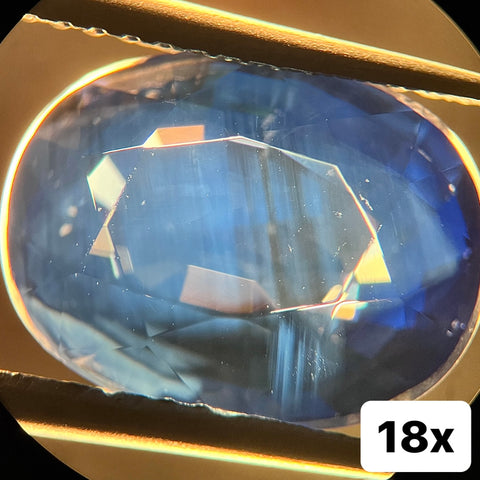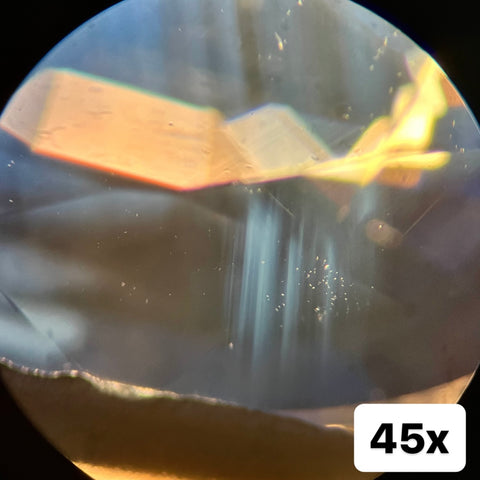Burton's Gems and Opals
4.80ct Blue Sapphire, Oval Cut
4.80ct Blue Sapphire, Oval Cut
Couldn't load pickup availability
Oval Cut Natural Blue Sapphire
Cut to intentionally maximize its fine blue color quality and exceptional size, this loose, 4.80 carat natural blue sapphire is ready for the right collector. This precious gemstone can be mounted by a jeweler or enjoyed as-is.
Learn more about natural sapphire identifiers with a gemology lesson below, using this very stone as our example.
Stone Details...
| Stone Variety | Blue Sapphire, natural |
| Stone Family | Corundum |
|
Weight (carats)
|
4.80cts -see additional notes |
| Weight (grams) | 0.96g |
| Dimensions (inches) | 0.45" x 0.35" x 0.2" |
| Dimensions (millimeters) | 11.53mm x 8.94mm x 5.26mm |
| Origin | unspecific |
| Shape | faceted mixed oval "Native" cut |
| Material Grade | AA |
| Colors | blue |
| Notable Inclusions | color zoning, rutile needles |
| Treatments / Enhancements | heat |
| Mohs Hardness | 9 |
| AGL Report Number | CS 67397 |
| SKU Number | #757 |
|
Additional Notes |
The stone registers on our in-house scale as 4.78 carats. When minor discrepancies exist between our equipment and what is reported by a third party grading house, we defer to the third party report. |
This item can only be purchased online. To schedule an in-store viewing, please feel free to contact us here.
Gemology 101: Color Zoning & Cloudy Rutile Inclusions


The final two photo slots show the sapphire under 18x and 45x magnification, respectively. In the 18x shot, two clear examples of natural phenomena can be observed: color zoning and rutile needles.
The term, "color zoning," refers to fixed changes of color within a gemstone, caused by temperature changes or the uneven introduction of trace elements during the formation of the rough crystal. These shifts of color can range from minor to dramatic. Color zoning tends to occur along the shape of the rough crystal; in the case of natural sapphire, color zoning can make the appearance of straight lines or chevron-shaped angles. In the case of synthetic sapphire, color zoning is curved, as lab created sapphires are formed in tube-like crystals called "boules."
Referring back to our 18x photo, the variations of color that can be seen down the table (top) facet, just off to the right, form straight black and blue lines, indicative of natural color zoning. The second key indicator of natural origin are the cloudy white lines brought more into focus by the 45x photo, a needle-like mineral called "rutile."
Rutile can be found as an inclusion across a variety of different gemstones, such as quartz, tourmaline, sapphire, ruby, alexandrite, and more. To date, scientiests have yet to be able to recreate this unique inclusion in any type of lab created synthetic; when a gemologist finds these thin needles in a gemstone, the evidence proves a strong case of natural origin. Needles can range from course to fine. Finer needles are more delicate, thus more sensative to heat treatments. When heat treated, fine needles have the tendency to rupture or expand, giving clusters of them a cloudy appearance.
This is what we see when we look closely at a particular bezel facet of this sapphire under 45x magnification; the white lines are natural rutile needles that appear to have been exposed to heat treatment. In the gem industry, all sapphires on the market are expected to be heat treated unless otherwise proven by a reputable third party laboratory. Some stones require more sophisticated equipment than others to identify heat treatment; this sapphire is a unique example of a stone with heat treatment that can be identified with a simple jeweler's loupe.
Share


































